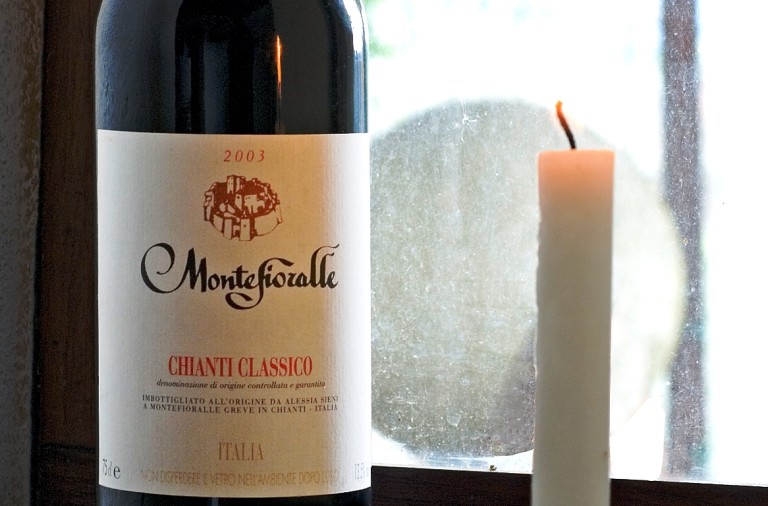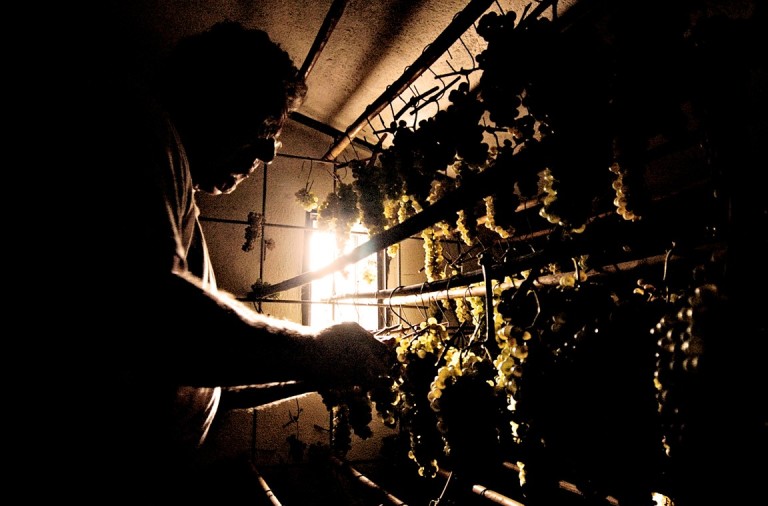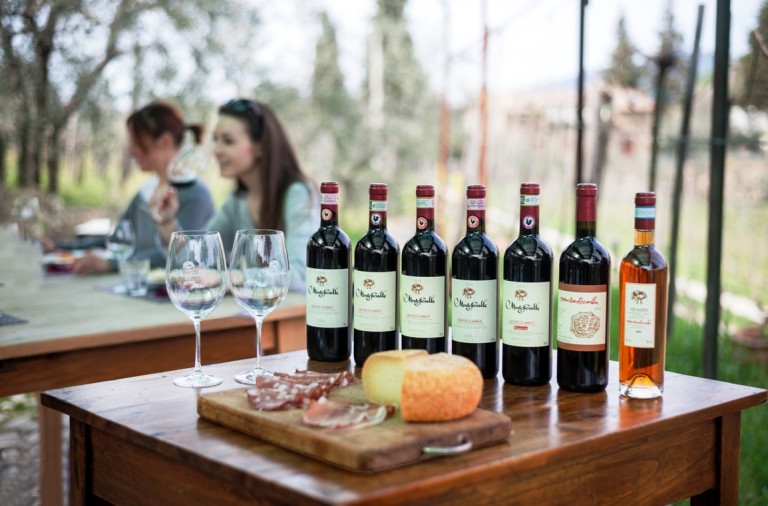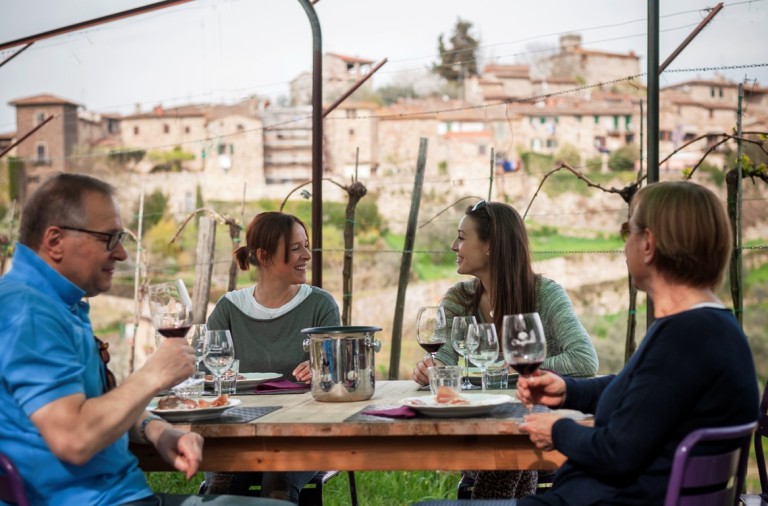Articolo disponibile anche in: Italian
On a small “terrazza” in front of the small town of Montefioralle, above Greve in Chianti, are a few hectares of vineyard. It derives from knowledge of the past and looks to the future: Fernando Sieni and his son Lorenzo combine the two in the Azienda Agricola Montefioralle.
“I am the firm’s volunteer”, Fernando smilingly tells us,”the factotum of farms of the past; i was a technician at the Nuovo Pignone of Florence.Our business was born on a piece of land owned by the church. At the end of the 1900’s the church decided to sell. My father Renato had already begun in 1964, and the wine was bottled through the local priest who acted as a sort of agent”.
Today, Fernando’s three sons, after having bought the land and the cellar, each follow the business according to their schedules. Alessia is the only one who works full time. Lorenzo, a software developer, works in Florence. Elisa works part time.
As often occurs in our area, the vineyard and cellar are the family glue. Circa 10 thousand bottles of wine are produced each year.
“We sell all of it to private buyers from all over the world”, Fernando explains. “Aside from a restaurant in Montefioralle and a wine seller in Greve, we sell to people who visit us or who know us and order our wine. We try to be “local”….even from 10.000 kilometers away”.
Basically, Fernando and Alessia are in charge. Lorenzo gives a hand on the weekend. The enologist Elisabetta Barbieri follows the technical and agronomic aspect. She was a student of the late Giacomo Tachis who passed away last February.
The Sieni family has a very strong tie to Montefioralle. “The Sienis have been living here for as long as we can remember, for at least four generations. My great grandfather definitely lived in Montefioralle. I was born here where wine has always been a daily presence. My grandfather Fernando drank 2 and half liters a day! it was food for him. They called him Bastiano. For the 4.000 calories he consumed daily, he needed wine. I never saw him drunk.”
Sangiovese, Canaiolo and Colorino grapes are used for the Chianti Classico, a bit of Merlot e Cabernet for the IGT.
“I have always wanted to learn and apply myself”, concludes Fernando. “ We are able to run thought out tastings by keeping older vintages, to let people appreciate the concept of aging in the bottle. We realize that these are methods that a larger winery can’t follow (we keep 4 vintages in the cellar). From this point of view, we have some advantage. And we try to use it”.



